How to Choose the Right Dispensing Machine for Your Business Needs
In today's fast-paced business environment, selecting the right dispensing machine is crucial for optimizing operational efficiency and meeting consumer demands. According to a recent report by Smithers Pira, the global market for dispensing machines is projected to reach $2.1 billion by 2025, driven by significant advancements in technology and increasing automation across various industries. As businesses strive for greater precision, reduced waste, and improved productivity, understanding the diverse options available is essential. Factors such as the type of products being dispensed, production volume, and specific industry requirements must be evaluated to make an informed choice. This blog aims to provide insights and practical tips to help businesses navigate the complexities of selecting the ideal dispensing machine tailored to their unique needs.

Identifying Your Business Requirements for a Dispensing Machine
When choosing a dispensing machine for your business, it's crucial to identify your specific requirements first. Consider the type of products you will be dispensing, as this affects the machine's design and functionality. For instance, food-related businesses may require dispensing machines that adhere to strict hygiene standards, while retail stores might need units that can handle a variety of item sizes.
Tip: Conduct a thorough analysis of your product range and customer demands. This will help you narrow down the features you need, such as temperature control for perishable items or customizable dispensing options for a variety of products.
Another important factor is the volume of items you need to dispense. Machines come in various capacities, and selecting one that fits your production scale can optimize efficiency. Understanding how often and in what quantities you will be dispensing products can inform your decision.
Tip: Evaluate your peak operating hours and forecast demand to choose a machine that can sustain your workflow without causing delays or bottlenecks. This foresight can save you both time and money by choosing the right machine from the start.

Common Problems Faced with Various Types of Dispensing Machines
When selecting a dispensing machine, understanding the common problems associated with various types can help streamline the decision-making process. One of the most prevalent issues is inconsistency in dispensing quantities. Certain machines may not calibrate well, leading to over- or under-dispensing products. This inconsistency can cause frustration for both employees and customers, impacting overall efficiency and satisfaction.
To mitigate these issues, consider investing in a machine with advanced calibration features. Regularly scheduled maintenance and recalibration can also prevent quantity discrepancies from becoming a recurring problem. Additionally, user training can play a vital role—ensuring staff are knowledgeable about the machine’s functioning can drastically reduce operational errors.
Another common problem involves machine jams, often stemming from unsuitable product viscosity or size. This can result in downtime and lost productivity. To avoid this, select a dispensing machine specifically designed for the materials you handle. It’s also wise to keep the dispensing area clean and free from debris that could contribute to jams. By addressing these challenges upfront, you can enhance the effectiveness of your dispensing operations.
Evaluating Efficiency and Performance Metrics for Dispensing Solutions
When selecting a dispensing machine for your business, evaluating efficiency and performance metrics is crucial. Efficiency can be measured by the speed at which the machine dispenses products, minimizing wait times and maximizing throughput. It's essential to consider your operational needs: how many products do you need to dispense in a specific timeframe? The right machine should not only meet these demands but also adapt to peak times without compromising performance.
Performance metrics extend beyond speed; they also include accuracy and reliability. A machine that frequently jams or delivers inconsistent amounts can lead to wasted resources and frustrated customers. Look for machines with advanced technology that ensures precise dispensing, as well as user-friendly interfaces for easy adjustments. Additionally, reviewing maintenance requirements and the machine’s durability can provide insights into long-term performance, ultimately affecting your bottom line. By carefully evaluating these factors, you can ensure you invest in a dispensing solution that enhances productivity and supports your business objectives.
Budget Considerations: Balancing Cost with Functionality Needs
When choosing the right dispensing machine for your business, understanding budget considerations is crucial. In 2025, businesses must navigate a landscape where cost factors vary dramatically based on machine complexity and functional features. According to industry reports, companies often encounter a substantial range in pricing, with basic models starting around $5,000 while more advanced systems can exceed $50,000. This wide disparity underscores the importance of aligning your machine's capabilities with your operational requirements.

To effectively manage your budget, strategic allocation is essential. Research indicates that prioritizing essential features can help mitigate initial costs, while planning for potential upgrades can save money in the long run. In fact, a recent survey highlighted that 68% of businesses find flexibility in budgeting leads to greater innovation without compromising performance. Moreover, integrating budget apps into your financial planning can assist in tracking expenses and forecasting future needs, ensuring that your investment into the dispensing machine generates the best possible return.
Future-Proofing: Choosing a Dispensing Machine for Long-Term Use
When selecting a dispensing machine for your business, future-proofing should be a critical consideration. The right machine should not only meet your current needs but also adapt to changing demands over time. Evaluate the technology and features of the dispensing machine, opting for those that allow for software updates and the addition of new functionalities. This flexibility will enable your business to remain competitive as market trends evolve and customer preferences shift.
Another aspect of future-proofing is scalability. Choose a dispensing machine that can easily accommodate an increase in demand or expand its capabilities without requiring a complete replacement. This might mean selecting a model with modular components or compatibility with various dispensing formats. Additionally, consider the machine's durability and maintenance requirements: a robust design can extend the life of your investment and reduce downtime. By prioritizing these factors, you can ensure that your dispensing machine remains a valuable asset as your business grows and adapts to future challenges.
Dispensing Machine Features Assessment
Related Posts
-
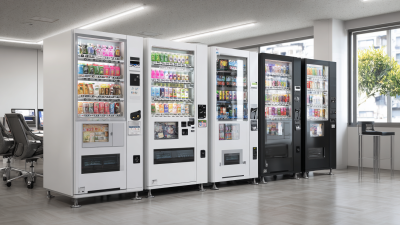
Maximizing Convenience: The Benefits of Modern Vending Machine Innovations
-
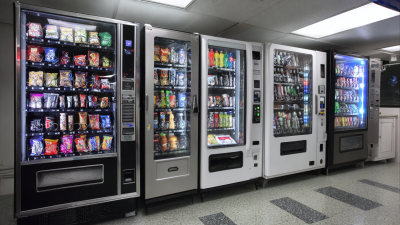
5 Compelling Reasons to Choose the Best Vending Machine Options for Your Business
-
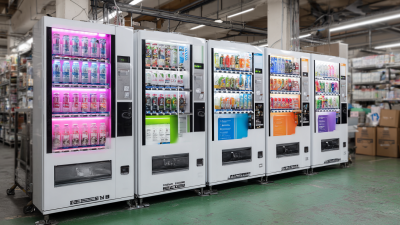
Best Vending Machine Options Crafted in China for Global Quality Recognition
-
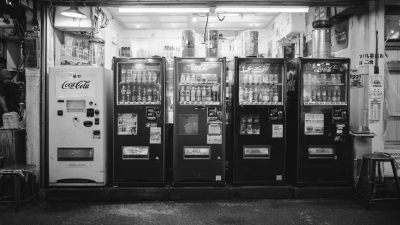
Crafting Excellence in Soda Machines Made in China for Global Service
-

Comprehensive Guide to Choosing the Right Coffee Vending Machine for Your Business Needs
-
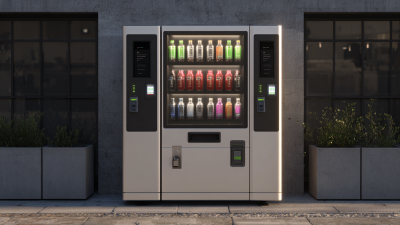
Solutions for Innovative Beverage Dispensing Technology
